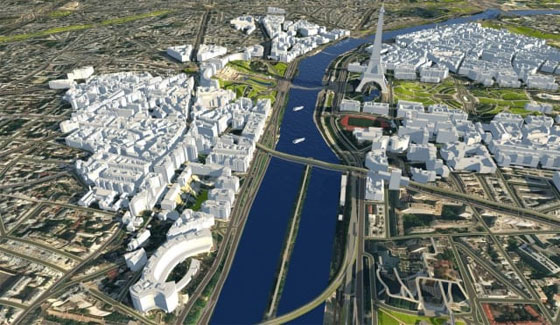The construction industry has come far on the shoulders of digital computing. Software usage is standard now in designing, modeling, cost estimation, and project management with every constructor now. Particularly, BIM (Building Information Modeling) software has become common in every project from small residential to giant infrastructure construction.
However, a major headache of the AEC’s (Architects, Engineers & Constructors) is data loss between the planning and development phases. Whenever you transmit data from one software to another, the receiving application translates the data in its own custom ways. What it cannot translate, it rejects as garbage. After that, the AEC has to recreate the lost data in the plan again. The more software stages your project has, the more this problem will occur, the more complicated this situation will become and the more the error margin will grow.
However, the rapid evolution in the cloud-based data storage, vending, and analysis technologies can be taken advantage of to patch these leaks. Specifically, the GIS (Geographic Information System) can be very handy when merged with or used in parallel to BIM applications. Let us delve deeper into the subject in this article.
What is GIS
A geographic information system (GIS) is a computer system for capturing, storing, checking, and displaying data related to positions on Earth's surface. GIS is a system designed to capture, store, manipulate, analyze, manage, and present all types of geographical data. The key in this technology is Geography – this means that some portion of the data is spatial. By relating seemingly unrelated data, GIS can help individuals and organizations better understand spatial patterns and relationships.
How can GIS help in BIM
The fusion of BIM and GIS provides the power to build a robust context model where geographic information and infrastructure design data are brought together. Software companies like AutoDesk develop both GIS and BIM software and are now integrating one into the other in order to provide more data clarity and reusability. Adoption of GIS into BIM will give you a fat handful of benefits; the major one being digital data as part of deliverables for each transition. The geographical (and geological) data merged with project plans and drawings will give valuable insights into the AEC’s decision-making process.
Read more

~~~~~~~~~~~~~~~~~~~~~~~~
Published By
Rajib Dey
www.bimoutsourcing.com
~~~~~~~~~~~~~~~~~~~~~~~~
However, a major headache of the AEC’s (Architects, Engineers & Constructors) is data loss between the planning and development phases. Whenever you transmit data from one software to another, the receiving application translates the data in its own custom ways. What it cannot translate, it rejects as garbage. After that, the AEC has to recreate the lost data in the plan again. The more software stages your project has, the more this problem will occur, the more complicated this situation will become and the more the error margin will grow.
However, the rapid evolution in the cloud-based data storage, vending, and analysis technologies can be taken advantage of to patch these leaks. Specifically, the GIS (Geographic Information System) can be very handy when merged with or used in parallel to BIM applications. Let us delve deeper into the subject in this article.
What is GIS
A geographic information system (GIS) is a computer system for capturing, storing, checking, and displaying data related to positions on Earth's surface. GIS is a system designed to capture, store, manipulate, analyze, manage, and present all types of geographical data. The key in this technology is Geography – this means that some portion of the data is spatial. By relating seemingly unrelated data, GIS can help individuals and organizations better understand spatial patterns and relationships.
How can GIS help in BIM
The fusion of BIM and GIS provides the power to build a robust context model where geographic information and infrastructure design data are brought together. Software companies like AutoDesk develop both GIS and BIM software and are now integrating one into the other in order to provide more data clarity and reusability. Adoption of GIS into BIM will give you a fat handful of benefits; the major one being digital data as part of deliverables for each transition. The geographical (and geological) data merged with project plans and drawings will give valuable insights into the AEC’s decision-making process.
Read more

~~~~~~~~~~~~~~~~~~~~~~~~
Published By
Rajib Dey
www.bimoutsourcing.com
~~~~~~~~~~~~~~~~~~~~~~~~
Thank you for sharing useful and creative content
ReplyDeleteautocad training institute in Noida
autocad training institute in Delhi